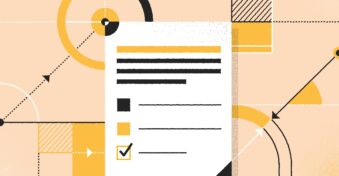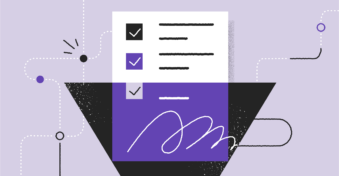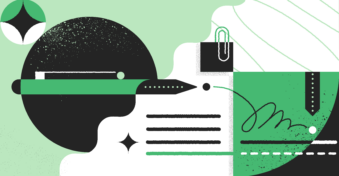A generic liability waiver protects businesses and individuals against potential lawsuits by preparing for and addressing possible disputes before they arise. Additionally, the waiver states the risks to your customers so they know what to expect before assuming responsibility for damages.
You may hear other terms that mean the same thing as a generic liability waiver, such as a hold harmless agreement or a release of liability. For all intents and purposes, these mean the same thing.
What Is a Generic Liability Waiver?
A generic liability waiver is a legal agreement made between two parties wherein one party waives the right to hold the other party responsible for damages. That means that the party who is asking for the waiver to be signed will be protected against lawsuits for health, financial, or property damages.
In addition to reducing the risk of a lawsuit, generic liability waivers can also help lower legal costs and protect your rights regarding intellectual property. That’s why it’s common for business owners and freelancers to ask for this type of waiver to be signed.

Is a Generic Liability Waiver Legal?
Yes, generic liability waivers are legal agreements. However, to ensure that the other party doesn’t claim they didn’t know what they were signing, make sure to follow these two important tips.
Don’t hide important information in any way
Make sure that you’re not hiding important information. That includes using legal jargon so that the reader can’t understand what they agree to. The waiver should be written in clear language so that the other party can’t claim that they didn’t understand the wording. And, of course, don’t leave off any necessary information.
Have the other party sign a fully completed waiver
Don’t leave blank spaces to fill in with information later after the waiver’s signed. This could get you into trouble if the other party claims that the information wasn’t included at the time of signing.
How Does a Generic Liability Waiver Work?
A generic liability waiver covers anything that you’re worried could result in a lawsuit for health, financial, or property damages. That will change based on what the waiver is used for.
Customizing the waiver
While most generic liability waivers start out similarly, you can customize the release form to suit your business and needs. That way, you’ll protect yourself against whatever liability issues you’re concerned with. The information you add or remove will depend on what you’re using the waiver for.
For example, if you have a model release form, which is a more specific kind of liability waiver, you would probably want full rights to use the photos that you take for art exhibits, promotions, or publications. In that case, the release may include the following:
- Consent to alter the images
- Permission to use the person’s likeness
- Parent or guardian’s signature for models under 18
Here’s another example. If you’re renting out space for a video shoot, the release form would likely include the following:
- Address of the property
- Filming schedule
- Location modifications
- Cleanup guidelines
- Release of the location depiction
Basically, whatever your needs are, there are ways to adapt the generic liability waiver to suit your purposes.
Generic liability waivers don’t protect you 100% of the time
Even a basic liability release form can provide legal protection if it’s drafted well using reliable tools. For example, if an injury occurs due to negligence by the other party, you may not be held responsible if you have a generic release.
However, do note that these releases, even more detailed ones, don’t necessarily protect you against anything and everything that could happen. For example, if you don’t properly care for your property and a person gets hurt there, the waiver may not protect you against accepting responsibility.
How to Write a General Release of Liability Form
As mentioned above, your general release of liability form will be customized to your purposes, so there isn’t one correct way to write it. However, there are a few standard pieces of information to include, and we’ll go over them here.
- Caution to Participants / Warning: The reader is asked to carefully read the waiver before signing. Consider highlighting the warning so that it gets the reader’s attention, and they can’t say they didn’t see it.
- Information About Both Parties: Both you and the person who will be signing the waiver need their information on the contract. At the very least, include both of your full names and addresses.
- Event Details: Describe the event that will take place, including dates, locations, etc.
- Risk Rundown: A transparent list of the risks the other party faces by signing. The risks should be described in detail. Also, state that your company will not pay for insurance costs.
- Release Clause: This clause states that your company won’t be held liable for asset or property misuse that results in financial, personal, or property injury.
- Payment: If there is payment required, include the details, especially the amount that is outstanding.
- Indemnity Agreement: This says that if the other party decides to sue, they’re responsible for the court and legal fees for both parties.
- Waiver Laws: If the activity occurs in multiple locations or requires travel, this clause states the region in which the waiver applies. If there’s a dispute, this clause will clarify which law will govern the case and where the lawsuit can take place.
- Voluntary Agreement: This states that the parties who sign the agreement must (a) understand what they’re signing, particularly that they’re aware of the risks, and (b) sign voluntarily.
- Signatures: At the end of the waiver, you’ll need an area for signatures by both parties. In addition to the signatures, each person’s name should be reflected here, along with a spot to fill in the date of signing.
Additionally, you can opt to add deadlines, NDAs, payment terms, and anything else you deem important.
When to Use a Generic Liability Waiver
Whenever you collaborate with another business, client, or creative professional, it pays to have a generic liability waiver. There are many scenarios in which a generic liability waiver will be useful, including:
- Prior to dangerous activities like skydiving or white water rafting
- Renting out a property, like an entertainment venue
- Selling a commercial design to a business owner
- Transferring ownership of a business asset, like a logo
- Using someone else’s photograph or likeness

Basically, if the business has the potential for injury or loss, a standard release is highly recommended.
Here’s a more detailed example:
Let’s say you own a gym. The waiver will explain the dangers associated with the gym so that members and visitors are aware of the risks ahead of time. The guest would have to agree to or sign the waiver before using the gym. If they were to get hurt, depending on the specifics of the incident, the gym might be protected against a lawsuit thanks to the waiver.
The waiver may also say that the gym isn’t responsible for any lost or stolen items, which offers another level of protection for the company.
Free Generic Liability Waiver Form
While you can use hard copy waivers, the process is much more convenient for everyone if you opt for electronic waivers. PandaDoc’s online waiver software lets you upload or create waivers and collect signatures, all without the need for paper documents. With PandaDoc Waivers, you can:
- Import a document (PDF, Word, etc.) if you already have a waiver created. Then, turn it into an electronic waiver to send digitally.
- Create a legally valid waiver form from scratch with PandaDoc’s generic liability waiver form template.
- Share the waiver form online via a link or embed the link on your website for easy access.
You can also collect signatures via a mobile device, like a tablet, if you need to have waiver forms signed as people arrive at an event.
Final Thoughts
The last thing you want to rely on is a handshake and verbal agreement when it comes to something as important as your business or property. A generic liability waiver ensures that you won’t be responsible for health, financial, or property damages that result from professional collaborations or renting out your property.
While you may have a file on your computer where you keep your waiver forms, organizing everything online with a cloud service like PandaDoc means all of your forms (both blank and signed) will be accessible no matter where you are. When you need to create a waiver, update one, send it out for a signature, or refer to it to remind yourself of the terms, you can do it all from one place.


